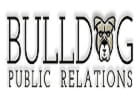When the dust cleared after trading on October 31, shares of Lumber Liquidators Holdings Inc (NYSE:LL) were down almost 11.5% on the day, following the release of its third-quarter results. If you just read the headlines on any of the popular finance websites that cover the company, the clear impression would be that it was an ugly quarter for the flooring retail specialist.
The reality? Sure, Lumber Liquidators did "miss" Wall Street analyst estimates for revenue, which was up 5.4%, to $257.2 million, and GAAP earnings, which were a net loss of $18.9 million. But it's more important to recognize that sales and customer traffic continued to improve, margins were stronger, and much of the earnings "miss" was because the company took a charge related to something very good for the company and investors: settling litigation tied to Chinese-made laminate flooring and putting an ugly part of its past firmly behind it.
Let's take a closer look at the company's results and break down the three key takeaways from the quarter that investors should be pleased about.
No. 1: Store traffic is growing and healthy
For retailers like Lumber Liquidators, comps -- or sales at stores open for more than one year -- is an important metric. A healthy business should be able to increase comps through a combination of increased traffic, higher prices, selling more goods and/or services, or some combination of these things. Lumber Liquidators' 3.8% comps growth in the quarter wasn't "lights-out" growth, but it was still a step forward, and included increases in traffic, as well as merchandise sales.
Management estimates that it potentially lost another 90 basis points -- or about 0.9% -- in comps sales due to the temporary closing of almost 40 stores during hurricanes Irma and Harvey during the quarter. The expectation is that Irma and Harvey should have a positive impact on the company's results in the fourth quarter -- both due to missed sales during the storm, as well as customers replacing damaged flooring. CFO Martin Agard said management is expecting comps growth could be anywhere between mid-to-high single-digit growth in the fourth quarter, depending largely on the Houston and Florida markets.
This marks consecutive quarters of both traffic and merchandise sales growth for the company, after reporting comps in the first quarter that only were positive because of higher traffic and increased installation sales. All said, that's five quarters of consecutive comps growth -- a positive result the company can hopefully continue to build upon.

IMAGE SOURCE: GETTY IMAGES.
No. 2: These key metrics keep improving
Gross margin percent was 36% in the quarter, up big from 31.4% last year, but down slightly from 37% in the second quarter. The company said the improvement in gross margin percent was due to management's efforts to fix its product mix, adding higher-margin vinyl products, as well as improved margins in the wood and bamboo categories due to reduced clearance activity. The company has also lowered its transportation expenses and inventory write-offs over the past year, boosting margins.
Ironically, one of the company's key initiatives -- selling more installation -- lowered the gross margin percent in the quarter. Over time, a higher penetration of installation sales could lower gross margin percent even further, but this isn't a "bad" thing since it doesn't offset high-margin flooring sales, and increases overall profitability. CEO Dennis Knowles said all stores will be able to offer installation services by the end of 2017.
Management says to expect another year-over-year improvement, with gross margin percent in the upper 30% range in the fourth quarter. However, it may not be as good as the sequential result due to increased promotional seasonality in the upcoming quarter, as well as increased installation mix.
No. 3: A very good reason to "miss" profit estimates
The average Wall Street analyst was expecting Lumber Liquidators to report earnings of $0.03 per share, while the company's result was a loss of $0.66 per share. The net loss in whole numbers was $18.9 million. But here's the thing: Lumber Liquidators took an $18 million charge in the quarter to increase its reserve related to the expected settlement of the ongoing class-action litigation.
The bad news is it's another $18 million in losses related to the Chinese-made laminate issue going back to 2015, bringing the total to $36 million. The good news is it will settle this litigation. Twenty-two million dollars will be cash, while $14 million will be in-store vouchers that will make a smaller financial impact on the company to fund than would cash.
The company also spent another $2.9 million in legal fees during the quarter that were related to this ongoing litigation. As soon as the settlement is approved by the courts -- hopefully during the current quarter -- those incremental legal costs will also come to an end.
Combined, that's $20.9 million in non-recurring expenses during the quarter completely related to litigation that's about to end. If we adjust non-recurring items out of Lumber Liquidators' operating results in the quarter, the company would have "beat" Wall Street's expectations and delivered $5.1 million in positive operating income.
Looking ahead
While it will still have an impact on the fourth quarter, the company's expenses are about to improve by almost $3 million per quarter with the resolution of its ongoing litigation. Considering that its balance sheet has been under pressure over the past couple of years, this is a very good thing.
At the end of the third quarter, Lumber Liquidators reported cash and equivalents of $18.9 million, up $11 million sequentially, while the balance owed on its revolving credit facility was $25 million lower. However, the company's inventory was also down by $20 million, which, combined with other changes, reduced its total working capital by almost $36 million since the second quarter. The good news? That's exactly the amount of the accrual the company has taken to address the multi-district litigation, listed as a current liability on the balance sheet.
To put it bluntly, investors should pay very close attention to how management addresses the balance sheet in coming quarters. The relief of the legal expense should free up cash to pay off debt, reinvest back in store growth, or -- more likely -- a combination of both. It will be important to see how Knowles approaches this going forward.
On the earnings call, he said they expect they will pay the litigation settlement in February of 2018 and reserve the right to use either cash off the balance sheet -- or funded by debt -- or issue and sell stock to raise some of the capital. At quarter-end, Lumber Liquidators had $115 million available between its cash and credit revolver. This has the company in pretty solid financial shape as it finally moves ever closer to closing the book on the Chinese-made laminate saga.
What's next? The company now should start shifting fully from stabilizing the business and crisis management to executing on a growth plan. Stay tuned in the upcoming quarters to learn what management plans to do with the newly freed-up capital it will no longer have to give to its attorneys.
10 stocks we like better than Lumber Liquidators
When investing geniuses David and Tom Gardner have a stock tip, it can pay to listen. After all, the newsletter they have run for over a decade, Motley Fool Stock Advisor, has tripled the market.*
David and Tom just revealed what they believe are the ten best stocks for investors to buy right now… and Lumber Liquidators wasn't one of them! That's right -- they think these 10 stocks are even better buys.















